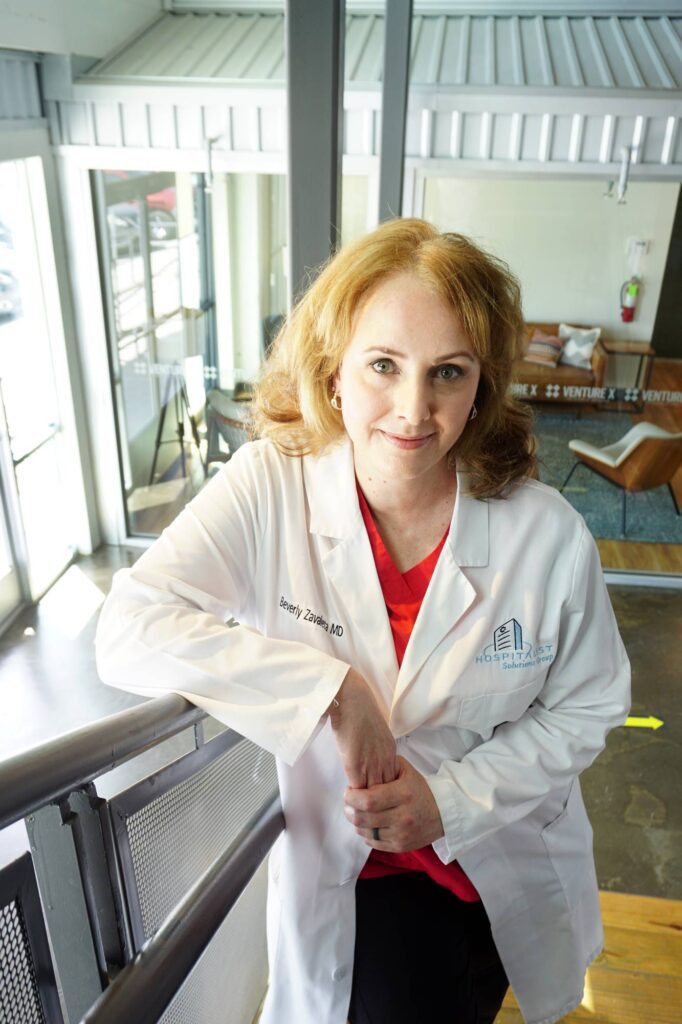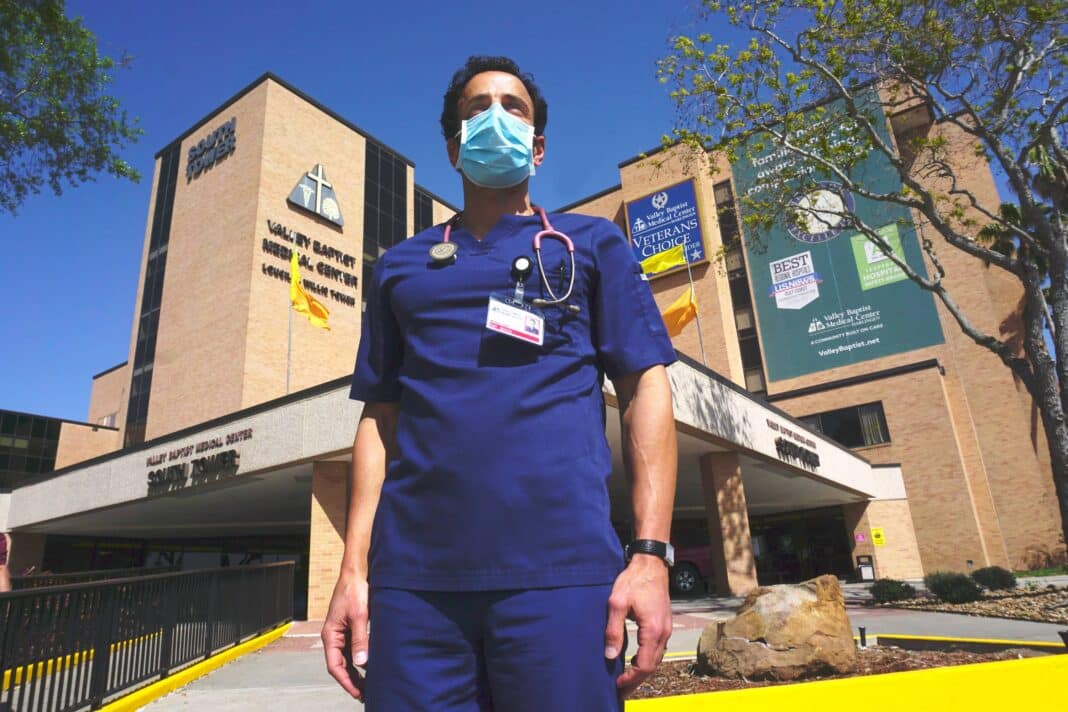Throughout the world, doctors are being called heroes for the work they have been doing since the first cases of COVID-19 were reported. In Brownsville, and the Rio Grande Valley, things are no different.
A year from the first shelter-in-place order by Cameron County, local doctors remember what it was like to experience COVID-19 back when little information on the virus was available. With little personal protective equipment, little data and few resources, doctors throughout our community were fighting the virus and trying to save as many lives as possible.
“It’s really hard to put it in a few words. To say the least, overwhelming, at the least. And at the most, traumatic to many of us,” Dr. Jamil Madi, a critical care specialist for Valley Baptist Medical Center-Harlingen, said during an interview when asked how he would describe the past 12 months.
“To the medical staff, to the people who work in the hospitals, to the patients and their families, and the community at large. It has been in many ways devastating to a lot of families who lost loved ones in one family structure or unit. With some households losing more than one member of their family last year. That’s the saddest and the most devastating part, unfortunately.”
Dr. Beverly Zavaleta, a physician at VBMC-Brownsville, echoed the sentiment and said the pandemic has taken a mental toll on healthcare providers because they are trained to save lives. She said she’s had patients where several members of the family died, leaving only one left.
“It is a problem and the reason I think it is because we are trained to heal people. And this is something that we still don’t have great treatments for it, so when you’re surrounded by so much disease and death, and you can’t help people at all, it’s a horrible feeling,” she said.
“I’ve had patients where their entire family has died, they’re the only one left, maybe out of eight people. It feels, even to me, like an unbearable tragedy, and I’m probably feeling just one percent of what that person must be feeling. You cannot just get over that in a week or a month.”
Madi said the frustration was even higher with the highest peak of cases back in July with many patients going into respiratory or cardiac arrest three to five times a day. He said the surge of patients going to the hospitals with COVID-19 was so high that medical workers had to decide which patients to keep treating and which to let go.
“The frustration of not being able to save many. There was a point with our large surge in July, where we were having code blues, which means that someone is having cardiac arrest or respiratory arrest, anywhere between three to five times each day, every day for 30 days in a row. People were dying and we were unable to do anything for them,” he said.
“The surge was so high that we had to allocate our resources, we had to decide which patients require more aggressive treatment than others, which patients we had to let go because there was nothing more that we could do for them, so a lot of people died. It was unfortunate; it was sad and imagine that happening on a daily basis for weeks on end. It put us all down, we were exceedingly frustrated, we were sad, we felt our hands were tied even with the studies coming in about certain treatments.”
Madi said the saddest part was seeing the families not being able to say goodbye to their loved ones in person. He said he would talk on the phone with them to explain to them that all resources have been exhausted.
“There was the pressure of the families wanting everything done for their loved ones and understandably of course,” he said. “Them not being able to see their loved ones, so they would call me on the phone to be able to discuss their issues and them not understanding that we’ve exhausted all of our resources. And them wanting us to continue all the efforts that we could to keep their loved ones alive, that was the saddest part.”

Zavaleta said the experience has been traumatic for all the medical staff and that it will take a long time to process. She said everyone in the hospital was affected by having so many people sick and so many people dying. She said during the summer surge, the situation at the hospital became unreal and something like she has never experienced.
“In June, which was when our surge started, then we were really in the thick of things, and it just became unreal. Like living in some sort of sci-fi movie or apocalyptic movie. It was really like nothing I’ve ever experienced,” she said.
“This was quite beyond what I’ve seen, just in the level of so many sick patients coming in, all at once needing very critical attention, so, it was hard and horrifying.”
Zavaleta said she took care of a patient who is a veteran and a healthcare worker who worked in the COVID-19 unit. She remembers how he expressed to her that he has never been more scared than when he was a patient in the COVID-19 unit.
“I’ve never been to war, I’m not a veteran, but I did take care of one patient who is a veteran and a healthcare worker, and he said something to me that struck me in the heart, which was: ‘You know, doc. I’ve been to war, and I’ve been in the COVID unit as a patient … and I’ve never been so scared as when I was a patient in the COVID unit.’ And I think that was something that will stay with me forever,” she said.
Zavaleta said Brownsville and the Valley were fortunate to have very few cases at the beginning of the pandemic, giving hospitals more time to prepare. She said the hospital and the whole community were able to do a lot more planning.
“I believe Brownsville and the Valley was fortunate in that we had very few cases at the beginning. So, we were able to have some time to prepare. So, my hospital and really the whole community was able to do a lot more planning than some of the other places that were hit early, like Italy, Seattle and New York. They were hit so hard, so fast, that they couldn’t prepare. Where as we did have that advantage that we could learn from them and take preparation measures,” she said.
“There was still a lot of anxiety at the beginning. For me personally, just feeling that sense of dread going into work of what’s going to happen today, or are the cases going to go up today, am I going to get infected today. So, early on there was a lot of activity and also a lot of anxiety.”
When it comes to the future, Madi said he thinks we will be in a much better place a year from now. He said today we are in a better place than we were at a year ago and that the vaccine has made a difference in the outcome of hospitalizations and the death rate.
“As long as we continue with the vaccinations, and mostly getting our vulnerable population vaccinated before everyone else, I think we will be able to avoid having another surge and another increased mortality, more devastation to our community. But we need to make sure that vaccine reaches everyone. My hope is that that happens by the end of this year,” he said.
Madi said even though eventually he thinks we might be able to go back to a new normal where we don’t have to wear masks and open businesses to 100 percent capacity, like Gov. Greg Abbott allowed recently, he thinks it is too soon.
“I think eventually, we can end up with what the governor is stating but I think it’s a little bit too early and too premature to do so. I’m a little worried about that happening before Spring Break and I’m worried about what might happen in the upcoming few weeks, especially at that point, when the mandate was taken off, there was a little less than seven percent of Texans being vaccinated,” he said.
“So, we didn’t reach that number that makes us safe to open up and mingle. Even with the vaccination on board, we should continue with the safety precautions, including washing hands and wearing masks, and social distancing, as recommended by the higher medical authorities including the CDC (Centers for Disease Control and Prevention).”




